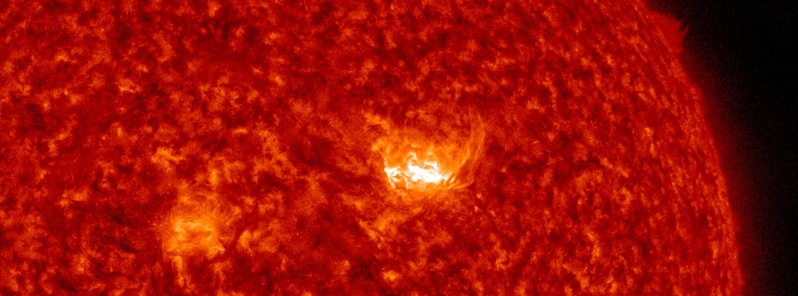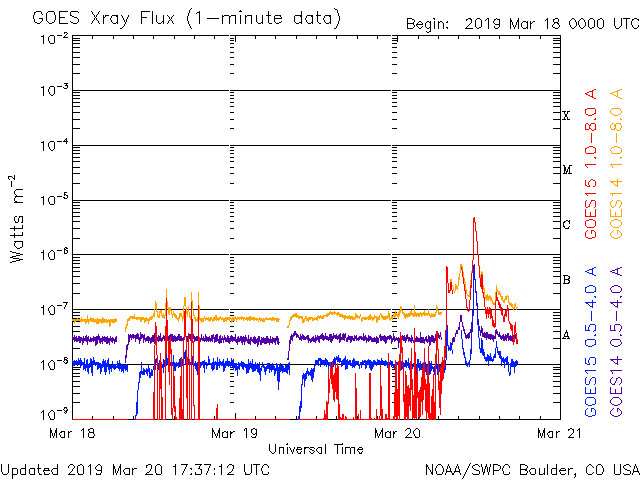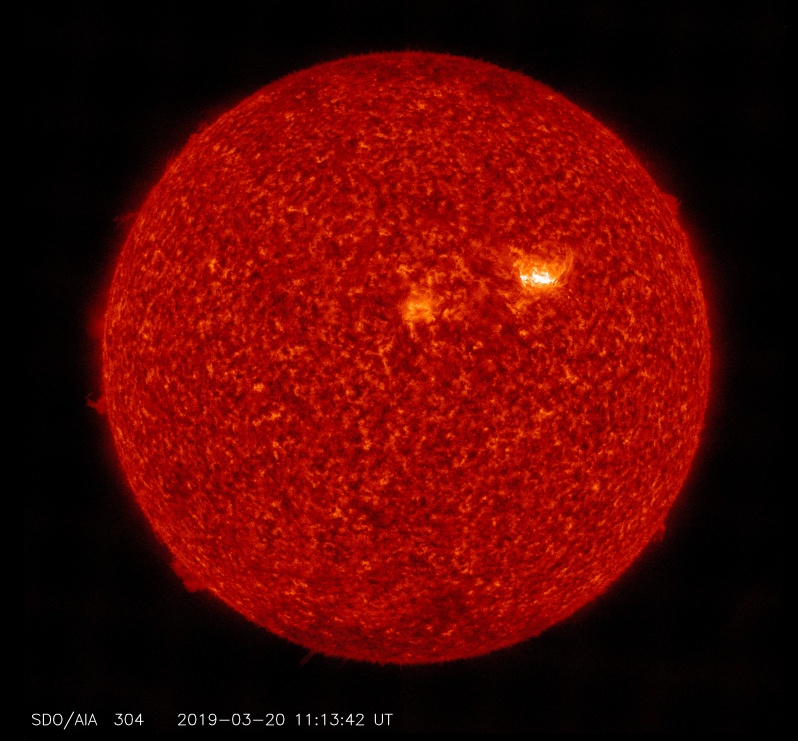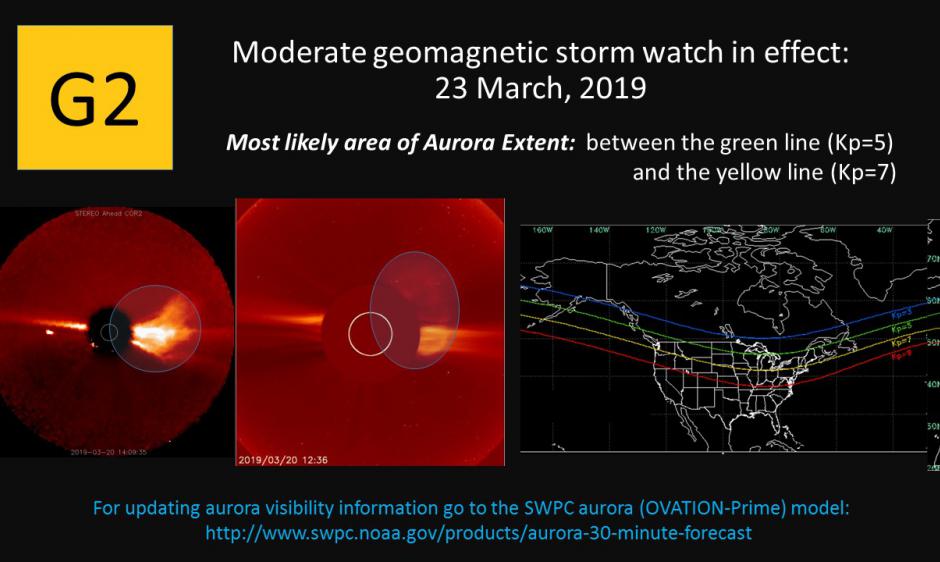C4.8 solar flare erupts from AR 2736, full-halo CME produced

A solar flare measuring C4.8 at its peak erupted from newly-emerged AR 2736 on March 20, 2019. The eruption started at 10:35, peaked at 11:18 and ended at 11:34 UTC. The region was also responsible for several B-class flares over the past 7 hours.
The flare was associated with a Type II Radio Emission with an estimated velocity of 3 762 km/s. Type II emissions occur in association with eruptions on the sun and typically indicate a Coronal Mass Ejection (CMS) is associated with a flare event.
STEREO Ahead COR2 imagery confirmed CME and an Earth-directed component/glancing blow is possible.
"Once the SOHO/LASCO imagery becomes available, we will conduct analysis to confirm if there was any notable CME, and if so – determine if there is any Earth-directed component," SWPC forecasters said 12:30 UTC today.



Solar activity is expected to continue at low levels, with a chance of isolated C-class flare activity, for the next three days.
The greater than 2 MeV electron flux reached high levels with a peak flux of 1,550 pfu at 21:15 UTC on March 19. It is expected to reach moderate to high levels on March 20 and 21 with CH HSS activity, and return to normal to moderate levels on March 22.
The greater than 10 MeV proton flux remained at background levels and is expected to maintain background levels over the next 3 days.
Solar wind parameters were enhanced over the past 24 hours, with a SSBC and the arrival of a positive polarity CH HSS. Total field strength briefly reached 7 nT, and Bz deviated southward to -5 nT on occasion. Solar wind speeds climbed from around 365 km/s to 400 km/s by 12:20 UTC today. Phi was predominately in a positive orientation.
Elevated solar wind parameters are expected on March 20 as a result of CH HSS activity. Near-background levels are expected to return by March 21/22.
The geomagnetic field was at quiet to unsettled levels over the past 24 hours and is expected to be at mostly quiet to unsettled levels on March 20 as a result of CH HSS activity. Mostly quiet levels are expected on March 21/22 with a return to background solar wind conditions.
The latest #solarstorm from new AR 12736 accompanied a coronal wave and dimming, also a C4.8 flare. From STEREO COR-2 data, the CME looks like Earth-bound. Monitor solar wind late on March 22 onward. @SpaceWxMike @nenecallas @TamithaSkov @chunder10 pic.twitter.com/AurFI6Wq9K
— Halo CME (@halocme) March 20, 2019
Update
An asymmetric, full-halo CME was observed in SOHO/LASCO coronagraph imagery starting around 11:00 UTC, March 20. Initial CME analysis and ENLIL model output suggested a mid-to-late March 23 arrival.
As a result, G1-G2 (Minor-Moderate) geomagnetic storm conditions are likely on March 23.


Featured image credit: NASA SDO/AIA

Commenting rules and guidelines
We value the thoughts and opinions of our readers and welcome healthy discussions on our website. In order to maintain a respectful and positive community, we ask that all commenters follow these rules.